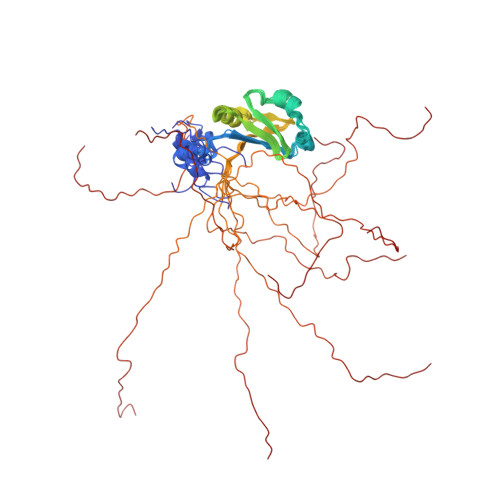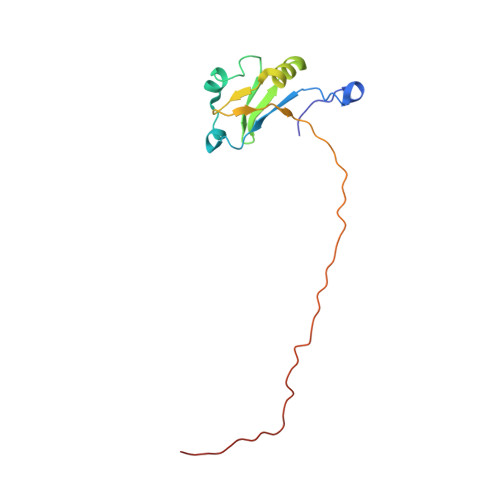The RRM-mediated RNA binding activity in T. brucei RAP1 is essential for VSG monoallelic expression.
Gaurav, A.K., Afrin, M., Yang, X., Saha, A., Sayeed, S.K.A., Pan, X., Ji, Z., Wong, K.B., Zhang, M., Zhao, Y., Li, B.(2023) Nat Commun 14: 1576-1576
- PubMed: 36949076
- DOI: https://doi.org/10.1038/s41467-023-37307-0
- Primary Citation of Related Structures:
7XRW - PubMed Abstract:
Trypanosoma brucei is a protozoan parasite that causes human African trypanosomiasis. Its major surface antigen VSG is expressed from subtelomeric loci in a strictly monoallelic manner. We previously showed that the telomere protein TbRAP1 binds dsDNA through its 737 RKRRR 741 patch to silence VSGs globally. How TbRAP1 permits expression of the single active VSG is unknown. Through NMR structural analysis, we unexpectedly identify an RNA Recognition Motif (RRM) in TbRAP1, which is unprecedented for RAP1 homologs. Assisted by the 737 RKRRR 741 patch, TbRAP1 RRM recognizes consensus sequences of VSG 3'UTRs in vitro and binds the active VSG RNA in vivo. Mutating conserved RRM residues abolishes the RNA binding activity, significantly decreases the active VSG RNA level, and derepresses silent VSGs. The competition between TbRAP1's RNA and dsDNA binding activities suggests a VSG monoallelic expression mechanism in which the active VSG's abundant RNA antagonizes TbRAP1's silencing effect, thereby sustaining its full-level expression.
Organizational Affiliation:
Center for Gene Regulation in Health and Disease, Department of Biological, Geological, and Environmental Sciences, College of Arts and Sciences, Cleveland State University, 2121 Euclid Avenue, Cleveland, OH, 44115, USA.


















